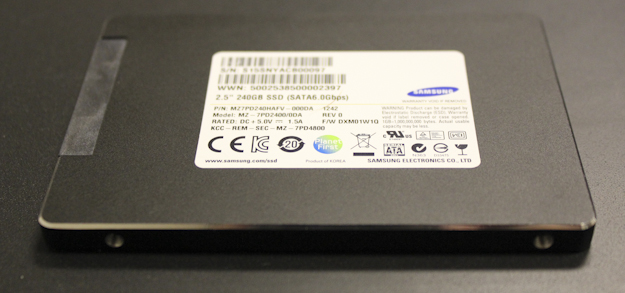
In September of 2012, The SSD Review ventured to Seoul, South Korea for the public unveiling of the Samsung 840 Pro at the 2012 Samsung SSD Global Summit. What caught us by surprise during our stay was not the grandeur of the event, or the otherworldly performance of the 840 Pro, it was that Samsung seemingly came out of nowhere with a world-class product. Where had they been hiding all these years as Intel, Micron, OCZ and the rest of the industry were making headlines? Apparently in plain sight…
You may all know that Samsung is the largest NAND vendor in the world and has been since 2002, but did you know they were also the largest SSD vendor between 2006 and 2011 and will probably retain that crown for 2012? The reason for this lack of exposure comes down to how Samsung’s Memory division conducted business over the past decade. They were less concerned about the general consumer and more focused on large OEM opportunities. That generic SSD that came with your laptop in 2009? It was probably a Samsung.
Starting with the 840 Pro, Samsung has changed their approach completely. They have made a concerted effort to get the Samsung name out and in front of the consumer. That exposure, along with amazing performance and a great price, has made the 840 Pro one of the hottest SSDs on the market over the past 6 months.
On the enterprise side, things were even more veiled. Unless you were a Tier-1 OEM, you had a difficult time procuring Samsung enterprise drives. Many distributors simply did not carry them as part of their line card, so small and mid-sized companies were out of luck.
With the introduction of the SM843, Samsung has taken what has worked so well for the 840 Pro, namely performance, price and marketing, and carved themselves out a great niche in the enterprise market.
INTRODUCTION
The Samsung SM843 is a 2.5″, 7mm thick SATA 6.0 Gbps enterprise drive that replaces the outgoing PM830. The SM843 is offered in 120, 240 and 480GB capacities. Each capacity point offers 1 DWPD (Drive Writes per Day) for 5 years for small block random writes and 4 DWPD for large block sequential writes.
You may notice that the write endurance is much lower than the Intel SSD DC S3700 and the Micron P400m, which are both rated at 10 DWPD for 5 years. This is a trend that we are seeing among many vendors in 2013. Instead of targeting many use cases with a single drive, Samsung is taking the approach of offering multiple drives that focus on more targeted use-cases. In fact, Samsung mentions the target applications as “20-30% write, Boot Drive/Scratch Drive, Meta data (HPC), Web server, Random read performance”.
Samsung remains tight-lipped about pricing, but expect about $1.20/GB.

The rest of the specifications look good, especially reads. The only thing that is worrysome is 4K random write performance. At 11.5K IOPS, the SM843 definitely trails high-end enterprise drives. Before we pass too much judgement, lets see how the drive performs.
 The SSD Review The Worlds Dedicated SSD Education and Review Resource |
The SSD Review The Worlds Dedicated SSD Education and Review Resource | 